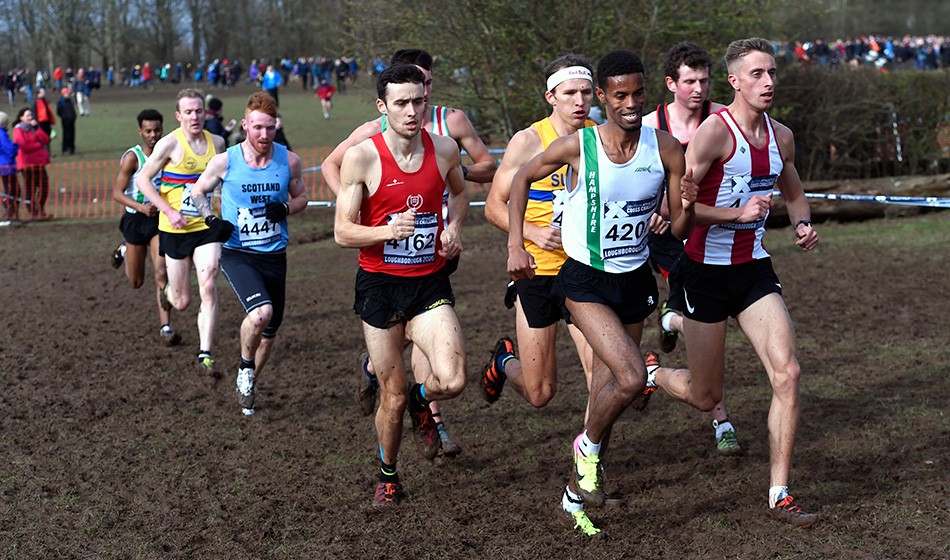
Cross country running is a popular and challenging sport that combines endurance, strength, and strategy. It involves running long distances over natural terrain, often through forests, fields, and hills. Cross country running requires a high level of fitness and mental discipline, as runners must navigate different terrain and weather conditions while pushing themselves to the limit. Here are some interesting cross country running facts that you may not know:
Cross country running can be traced back to the ancient Greeks, who believed that physical fitness was an important part of a well-rounded education. The first recorded cross country race took place in the 19th century at the University of Oxford, where a group of students decided to have a race from the town of Oxford to the town of Aldershot.
Cross country running is often associated with the fall season, as many high school and college cross country seasons take place from late August to November. However, cross country races can be held year-round, depending on the region and climate.
Cross country courses can vary widely in terms of terrain, ranging from flat grass fields to hilly trails with rocks, roots, and streams to navigate. This adds to the challenge and excitement of the sport, as runners must be prepared for anything that comes their way.
Cross country running requires a strong sense of balance and coordination, as runners must navigate uneven terrain and avoid obstacles. It also requires good footwork and body positioning, as runners must maintain their form and efficiency over long distances.
Cross country running can be a great way to improve mental health, as it has been shown to reduce stress and improve mood. The outdoors setting and the sense of accomplishment from completing a race can be especially beneficial for mental health.
Cross country running has a strong tradition of sportsmanship and camaraderie, with runners often helping each other out on the course and encouraging each other to do their best. This sense of community can be a great source of motivation and support for runners of all levels.
Did you know that cross country running originated in England in the early 19th century? It wasn’t until the late 1800s that it began to be organized and standardized as a sport. Today, cross country running is a popular high school and college sport in the United States, with thousands of teams and millions of runners participating every year.
The length of a cross country race can vary, but most high school and college races are around 5 kilometers (3.1 miles) for men and 4 kilometers (2.5 miles) for women. Cross country runners must be prepared for all types of weather, as races can be held in rain, snow, or extreme heat. In addition to physical endurance, cross country running requires mental toughness and the ability to stay focused over the course of a long race.
One of the most famous cross country races is the Boston Marathon, which is held every year on Patriot’s Day in April. This race attracts runners from all over the world and is known for its challenging course and historic significance.
In addition to being a competitive sport, cross country running can be a great way to improve overall fitness. It provides a full-body workout and can help to build strength and endurance. It can also be a great way to explore new places and see the beauty of nature, as many races take place on scenic trails and parks.
Cross country running is a team sport, with the top five runners on a team scoring points for their team. The team with the lowest score wins the race. This adds another layer of strategy to the sport, as runners must not only focus on their own performance, but also consider how their efforts can help their team succeed.
Overall, cross country running requires a combination of speed, endurance, and strategy, making it a challenging and exciting sport for both runners and spectators. Whether you are a seasoned runner or just starting out, cross country running is a great way to get active and challenge yourself physically and mentally. So why not lace up your sneakers and hit the trails today?
Cross Country Running FAQs
Cross country running is a fantastic sport that combines endurance, strength, and mental toughness. Here are some of the most commonly asked questions about it:
What is cross country running?
Cross country running is a competitive running sport that takes place over natural terrain, typically including hills, fields, and even forests. Unlike track running, which is held on a looped course, cross country races vary in distance and layout depending on the age group and competition level.
What are the benefits of cross country running?
Cross country running offers a multitude of benefits, including:
- Improved cardiovascular health: Running strengthens your heart and lungs, boosting your overall fitness.
- Increased strength and endurance: Cross country running builds both muscular strength and stamina.
- Mental toughness: The sport requires perseverance and mental focus to push through challenging terrain and distances.
- Stress relief: Running is a great way to de-stress and clear your head.
- Teamwork and camaraderie: Cross country is often a team sport, fostering a sense of belonging and support.
Who can participate in cross country running?
Cross country running is a sport for everyone! It’s suitable for people of all ages and fitness levels. Many schools offer cross country programs for students, and there are also adult running groups and recreational races available.
What kind of equipment do I need for cross country running?
The most important piece of equipment is a good pair of running shoes specifically designed for off-road terrain. These shoes will provide traction and support for uneven surfaces. Beyond that, comfortable running clothes appropriate for the weather are all you need to get started. Spikes are sometimes worn by competitive runners on softer courses.
What are some tips for beginners in cross country running?
- Start slow and gradually increase your distance and intensity.
- Focus on proper running form to avoid injury.
- Incorporate strength training exercises to improve your overall fitness.
- Find a training buddy or join a running group for motivation and support.
- Listen to your body and take rest days when needed.
- Most importantly, have fun!
What are some common injuries in cross country running?
While running can be a healthy activity, there are some potential injuries to be aware of. These include:
- Shin splints: Pain along the shins caused by repetitive stress.
- Runner’s knee: Pain around the kneecap due to overuse.
- Stress fractures: Tiny cracks in the bones caused by repetitive impact.
- Ankle sprains: These can occur from uneven terrain.
How can I prevent injuries in cross country running?
- Proper warm-up and cool-down routines are essential.
- Listen to your body and avoid pushing yourself too hard too soon.
- Wear supportive shoes and replace them when they wear out.
- Incorporate stretching exercises into your routine.
- Strengthening your core and leg muscles can help prevent injuries.
What are some resources for learning more about cross country running?
Here are some resources to get you started:
- National Federation of State High School Associations (NFHS): https://www.nfhs.org/activities-sports/track-fieldcross-country/ (This website has information on high school cross country rules and resources)
- Road Runners Club of America (RRCA): https://www.rrca.org/ (The RRCA offers resources for runners of all levels)
- American Trail Running Association (ATRA): https://trailrunner.com/ (This website focuses on trail running, a close cousin of cross country)
Cross country running is a rewarding sport that offers a great way to get exercise, challenge yourself, and enjoy the outdoors. So lace up your shoes and hit the trails!










This blog post on facts is a timely reminder of the importance of evidence-based reasoning and critical thinking. In a world where misinformation is becoming increasingly prevalent, it’s more important than ever to rely on facts to guide our decisions. Thank you for sharing your knowledge and insights with us.
Hi there! I just read your latest blog post and wanted to drop a note to say how much I enjoyed it. Your writing is so clear and concise, and your insights on Cross Country running were really interesting. Keep up the great work!